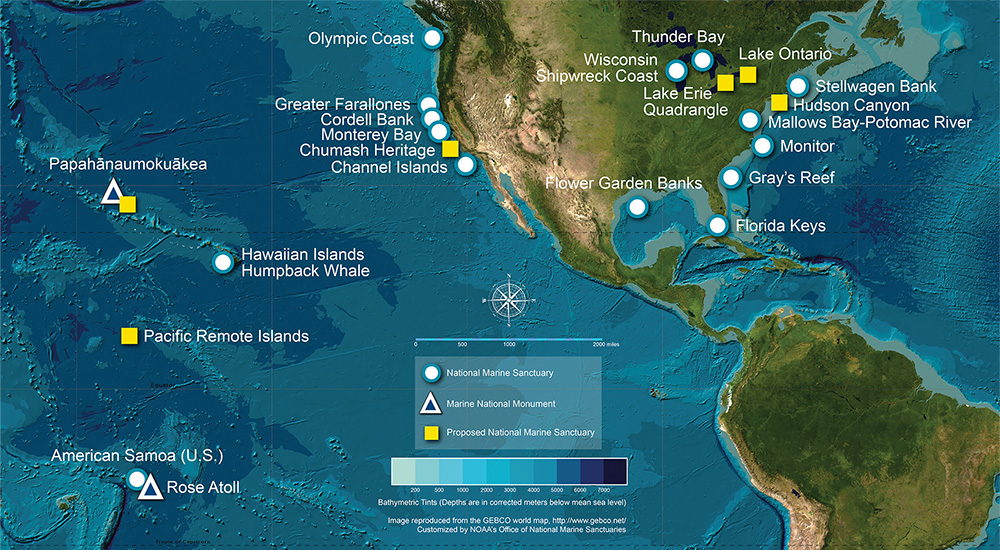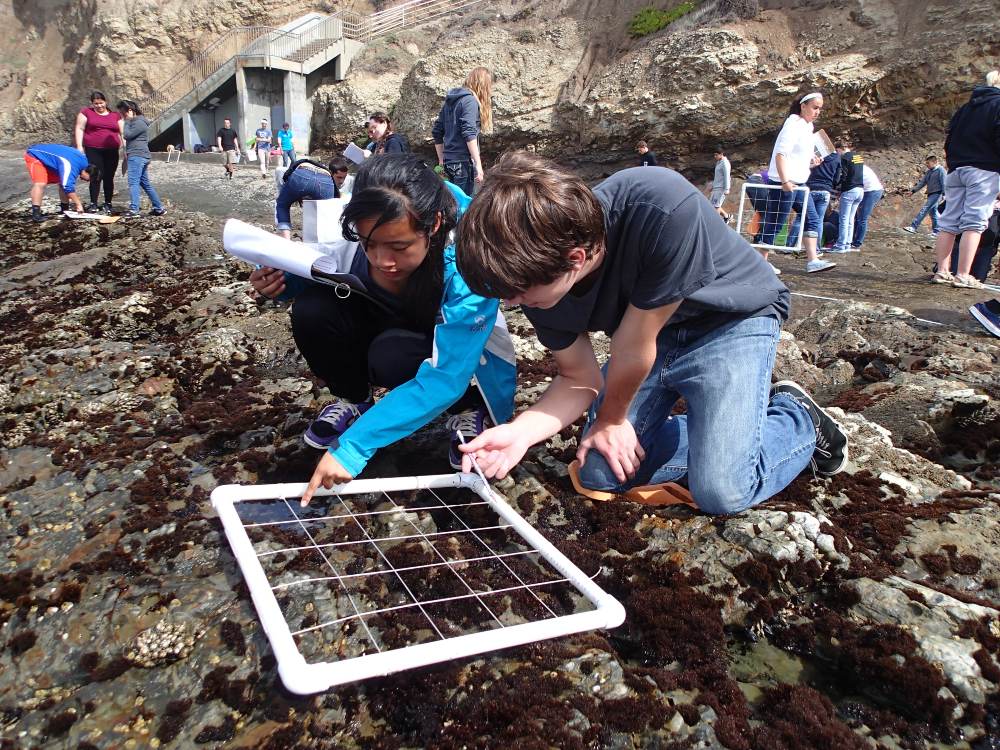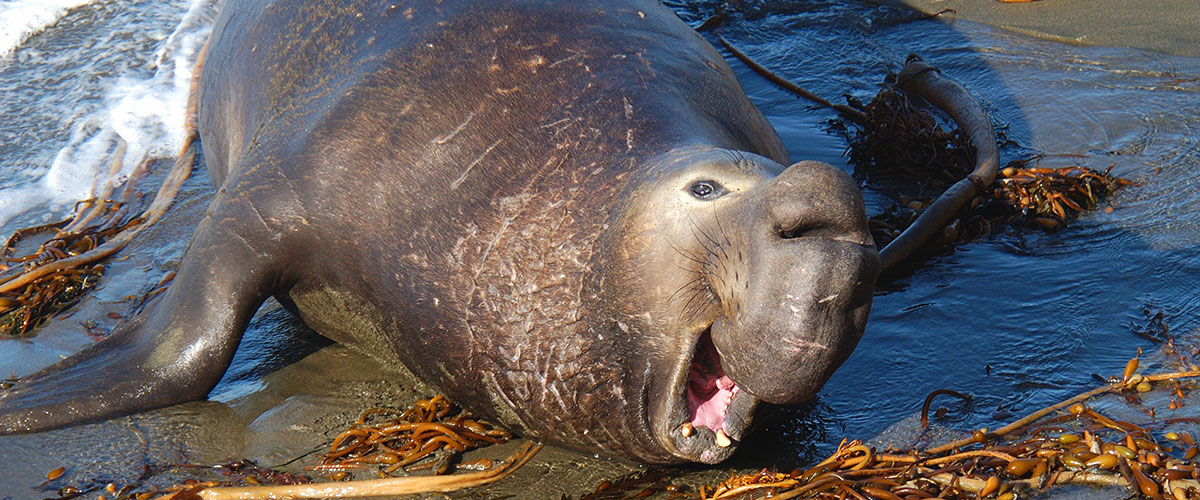From Washington state to the Gulf of America and from the Great Lakes to the Pacific Islands, the National Marine Sanctuary System protects 18 underwater parks spanning over 629,000 square miles of ocean and Great Lakes waters. By investing in innovative solutions, we strengthen these iconic places to address 21st-century challenges while supporting America's commerce and tourism. These unique locations inspire people to visit, value, and steward our nation’s iconic ocean and Great Lakes waters. A healthy ocean is the basis for thriving recreation, tourism, and commercial activities that drive coastal economies. The Office of National Marine Sanctuaries also leads the National Marine Protected Areas Center, the nation's hub for building innovative partnerships and tools to protect our special ocean.
Staff at your national marine sanctuaries are hard at work every day collaborating with partners on conservation initiatives, research and monitoring projects, education and outreach, community engagement, responsible recreation and tourism, cooperative resource management, and socioeconomic considerations.
Explore the pages below to learn more about what we do and how we do it.

The U.S. National Marine Sanctuary System covers over 620,000 square miles of marine and Great Lakes waters from American Samoa to Massachusetts, to the Florida Keys. Learn about the different regional offices and the sanctuaries each one manages.

From restaurants and hotels, to aquariums and kayak operators, the success of many businesses, millions of dollars in sales, and thousands of jobs, directly depend on thriving national marine sanctuaries.

National marine sanctuary advisory councils are community-based advisory groups established to provide advice and recommendations to the sanctuary superintendents on issues including management, science, service, and stewardship.

The National Marine Sanctuary System encompasses some of America's most iconic natural, cultural and historical marine resources in the ocean and Great Lakes.

Though they sound similar, national marine sanctuaries and marine national monuments are actually two different types of protections. But what, exactly, is the difference between a national marine sanctuary and a marine national monument?

A successful sanctuary requires the support and involvement of the communities that rely on those waters. We involve communities in their sanctuaries through advisory councils, public meetings, volunteer opportunities, and education and outreach events.

New research helps us to better understand the marine ecosystems we are protecting, while monitoring programs allow us to examine trends, notice when changes start to happen, and determine if the management actions we take are working.

National marine sanctuaries educate and engage the public in protecting the ocean and Great Lakes, and addressing climate change. Our education and outreach programs connect communities and raise awareness about the relationship people have with the ocean.

Under the National Marine Sanctuaries Act, we preserve the extraordinary scenic beauty, biodiversity, cultural and historical connections, and economic productivity of our most precious underwater treasures.

Though they sound similar, national marine sanctuaries and marine national monuments are actually two different types of protections. But what, exactly, is the difference between a national marine sanctuary and a marine national monument?